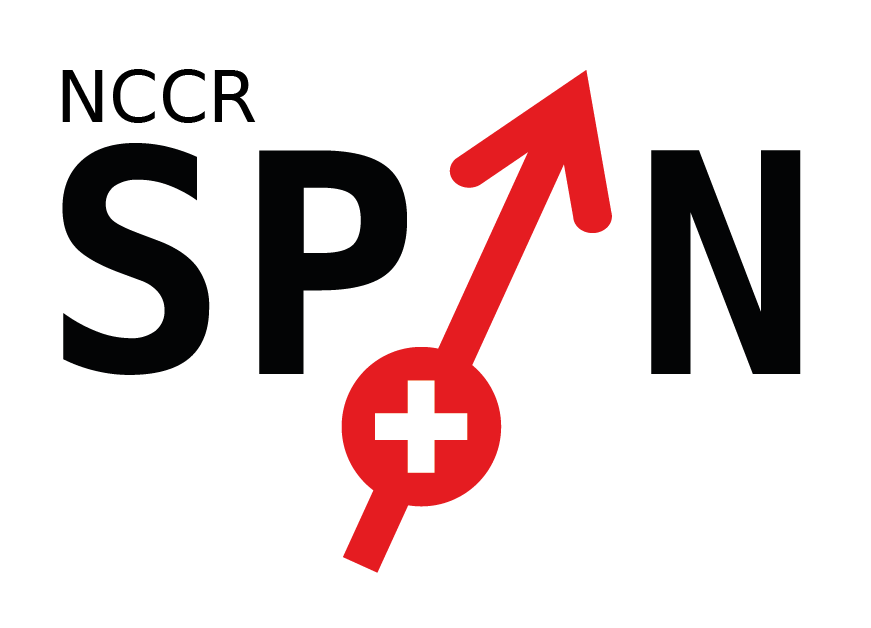Did you “Save the Cat”?
Imagine. You're a scientist who just built a time-travel portal… with one small problem: you can't yet control when and where it takes you.
Then, the inevitable happens. You trip over one of the wires that run along the floor of your chaotic lab and get sucked into your own portal! After landing somewhere in time and space, a mischievous cat—Spinny—appears, desperate to escape a bad situation.
“Take me with you!” the cat pleads.
With no better option, you agree, and Spinny joins your journey. Together, you must navigate quantum history, solving riddles and collecting clues to find your way back to 2025—and Save the Cat!
So started the Quantum Quest, an interactive and semi-digital scavenger hunt designed by NCCR SPIN team Joel Hutchinson, Marie Le Dantec and Maria Longobardi. The game was integrated into the program of the American Physical Society’s Global Physics Summit 2025 as part of the QuantumFest, directed by Maria Longobardi and Smitha Vishveshwara, and celebrating the International Year of Quantum Science and Technology. The players were prompted to solve riddles and navigate through some of the main events in the history of quantum science: a fun way to get to know even more about the topic! Even though about two-thirds of the riddles could be solved directly on the App, some tasks invited the players to move through the venue to find hidden elements essential to solving their riddles. The participants had three full days during the Global Meeting to play the game. Any participation, even without completing the quest, gave the teams the right to collect a Spinny pin. If they returned to 2025 and saved the cat, they could collect an additional prize!
“Save the Cat” turns learning into an adventure by encouraging curiosity, collaboration, and problem-solving—qualities at the heart of scientific exploration. This innovative approach to outreach reimagines public engagement as an immersive experience, where participants learn by doing—solving clues, uncovering stories, and moving through physical and digital spaces. This active learning format helps participants form deeper connections with quantum physics history and makes the subject more relatable.
The game also emphasizes that research and innovation result from global collaboration and interdisciplinarity. The various events in the history of quantum physics that the participants explored were selected with inclusivity in mind. The contributions of all genders and countries to the development of quantum physics were also highlighted as much as possible.
The game was received with a lot of enthusiasm from the participants. Many came to the NCCR SPIN booth to fold an origami bird (one of the tasks proposed in the Quantum Quest), fully immersed in Spinny-World. “We were planning on going out last night, but in the end our team stayed until 1 am in the venue to play the game!” one of them shared. “We want to solve all of the riddles, even if we know it’s not necessary to save the cat!” another reported. Despite a few challenging riddles, many teams pushed through and completed the Quest.
The NCCR SPIN would like to thank the team of designers for their hard work! Marilena Longobardi, Marie Le Dantec and Joel Hutchinson worked together on the story, the texts and the mechanics of the game. The riddles were designed by Joel Hutchinson and Marie Le Dantec, and Spinny was illustrated by Marie Le Dantec. Special thanks to Aldo Tarascio, who joined the team onsite: together, they exceed by far the recommended 10’000 steps per day just walking around the venue, hanging QRCodes, pictures, and solving unexpected challenges in the most elegant ways! Thank you to our beta testers, who gave precious feedback to improve the first version of the game: Artemii Efimov, Sarthak Girdhar, Ilya Golokolenov, Patrick Gono, Maximilian Hünenberger, Valerii Kosin, Gabrielle Le Dantec, Pierre-Yves Marec, Aldo Tarascio, Even Thingstad, and Ji Zou.
The NCCR SPIN decided to design their Quantum Quest with PlayTours, a scavenger hunt platform created to make it easy for anyone to build and run scavenger hunts of any size and type. The game builder was extremely user-friendly, and everything operated very smoothly, even with several hundred people using it simultaneously.
Thank you to the APS for hosting this event, as well as our sponsors: the APS Forum for Industry and Applied Physics, and Basel Precision Instruments (BASPI).
Save the Cat will be back at future events, so if you haven’t played yet, stay tuned!






